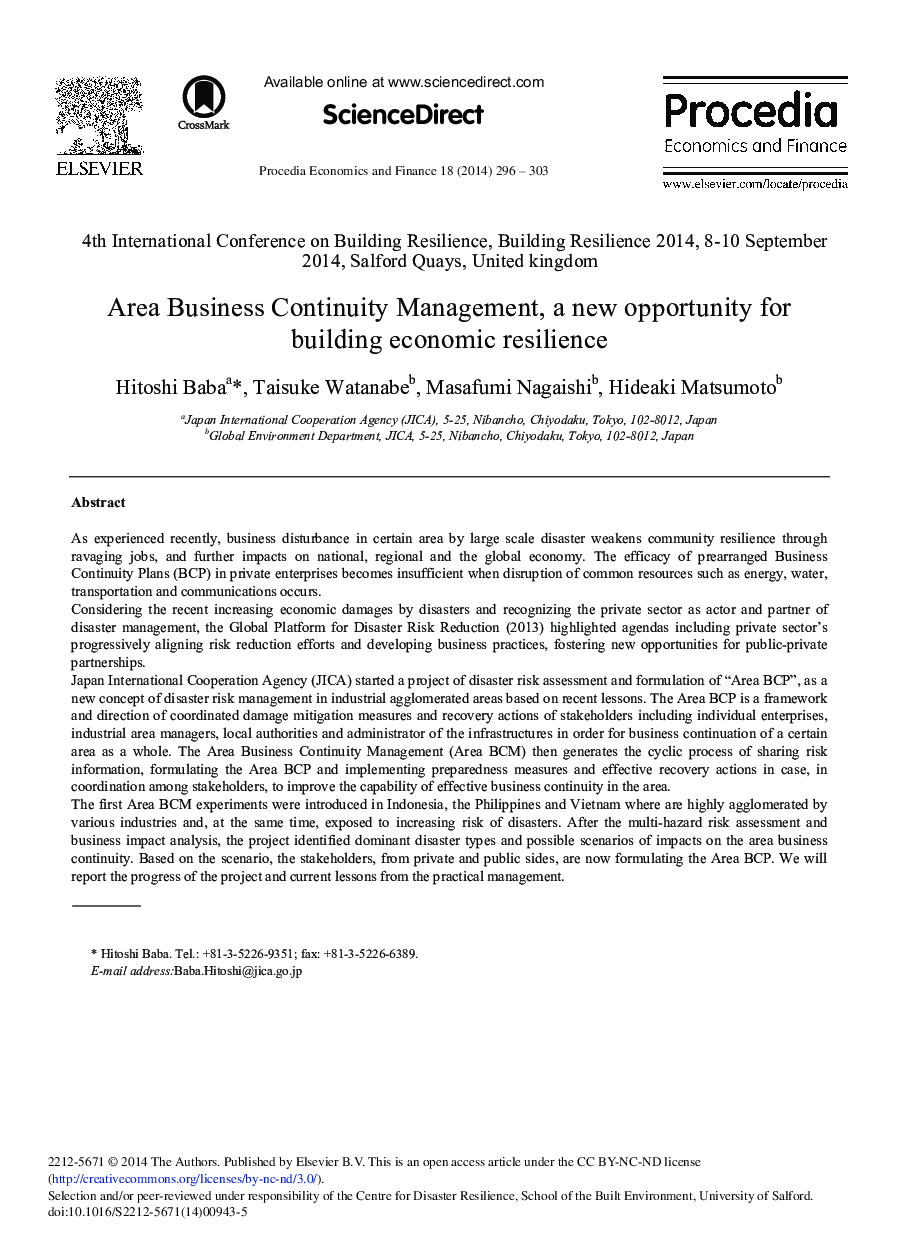| Article ID | Journal | Published Year | Pages | File Type |
|---|---|---|---|---|
| 981507 | Procedia Economics and Finance | 2014 | 8 Pages |
As experienced recently, business disturbance in certain area by large scale disaster weakens community resilience through ravaging jobs, and further impacts on national, regional and the global economy. The efficacy of prearranged Business Continuity Plans (BCP) in private enterprises becomes insufficient when disruption of common resources such as energy, water, transportation and communications occurs.Considering the recent increasing economic damages by disasters and recognizing the private sector as actor and partner of disaster management, the Global Platform for Disaster Risk Reduction (2013) highlighted agendas including private sector's progressively aligning risk reduction efforts and developing business practices, fostering new opportunities for public-private partnerships.Japan International Cooperation Agency (JICA) started a project of disaster risk assessment and formulation of “Area BCP”, as a new concept of disaster risk management in industrial agglomerated areas based on recent lessons. The Area BCP is a framework and direction of coordinated damage mitigation measures and recovery actions of stakeholders including individual enterprises, industrial area managers, local authorities and administrator of the infrastructures in order for business continuation of a certain area as a whole. The Area Business Continuity Management (Area BCM) then generates the cyclic process of sharing risk information, formulating the Area BCP and implementing preparedness measures and effective recovery actions in case, in coordination among stakeholders, to improve the capability of effective business continuity in the area.The first Area BCM experiments were introduced in Indonesia, the Philippines and Vietnam where are highly agglomerated by various industries and, at the same time, exposed to increasing risk of disasters. After the multi-hazard risk assessment and business impact analysis, the project identified dominant disaster types and possible scenarios of impacts on the area business continuity. Based on the scenario, the stakeholders, from private and public sides, are now formulating the Area BCP. We will report the progress of the project and current lessons from the practical management.
